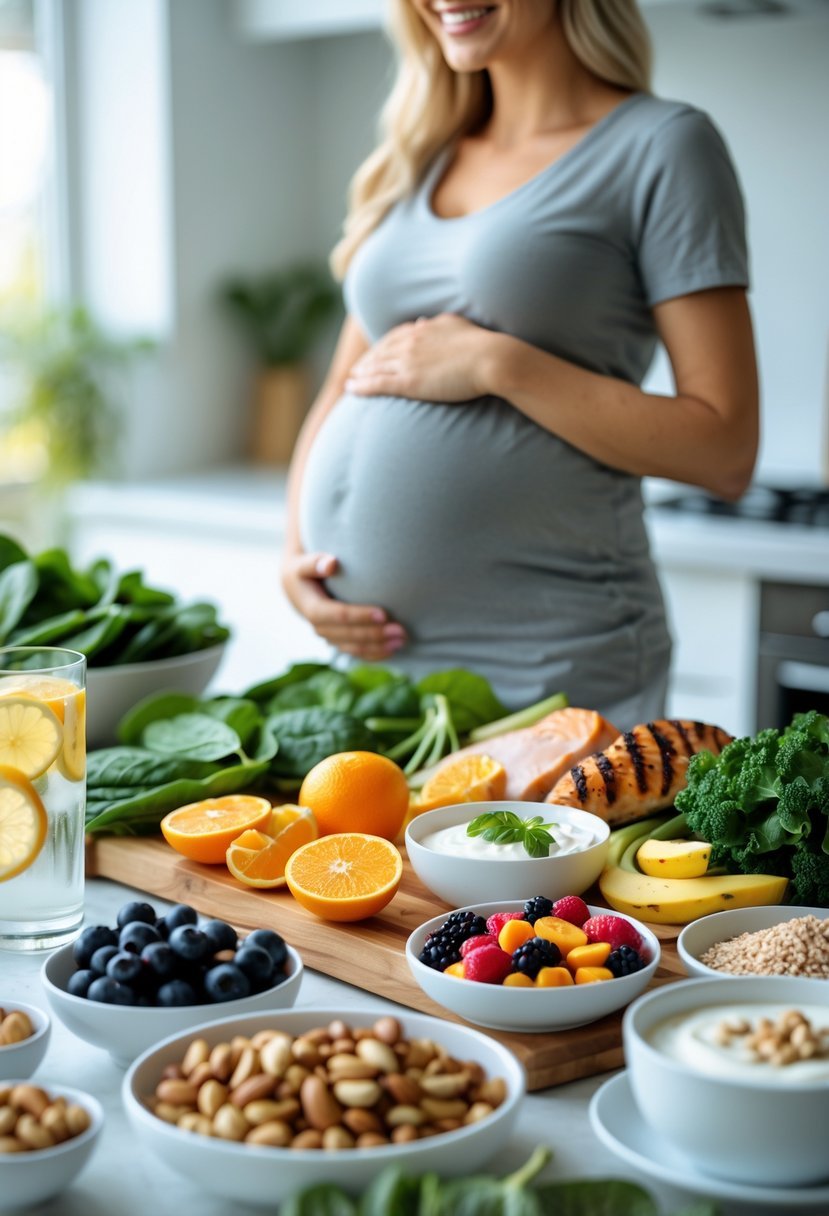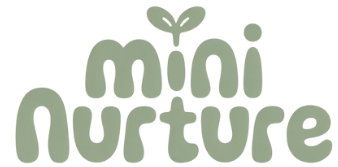A pregnancy meal plan helps ensure both mother and baby get the essential nutrients needed for healthy growth. It focuses on balanced meals that include enough calories, vitamins, and minerals to support pregnancy changes. A well-structured meal plan can make meeting these nutritional needs easier while keeping meals tasty and manageable.

Eating the right foods protects the baby’s development and keeps the mother energized throughout the day. It involves choosing nutrient-rich items like whole grains, lean proteins, fruits, and vegetables, while limiting harmful substances. Planning meals ahead helps avoid guesswork and supports consistent healthy eating habits.
Knowing which foods to include and which to avoid is key to a safe and effective pregnancy diet. Smart meal planning adapts to individual needs and helps maintain balanced nutrition from breakfast to dinner, including snacks.
Key Takeways
- Proper nutrition during pregnancy supports both mother and baby’s health.
- Thoughtful meal planning simplifies meeting increased nutrient needs.
- Avoiding certain foods helps prevent risks while ensuring safety.
Key Nutritional Principles for a Pregnancy Meal Plan

A pregnancy meal plan should focus on providing the right balance of nutrients to support both the mother’s health and the baby’s development. This includes ensuring adequate protein, carbohydrates, and fats in the diet. Choosing the best sources of these nutrients helps maximize absorption and promotes steady energy levels throughout the day.
Balancing Macronutrients for Optimal Health
Pregnant women need a balanced intake of macronutrients: lean protein, carbohydrates, and fats. Lean protein sources like chicken, fish, beans, and eggs help build tissues and support the baby’s growth.
Carbohydrates should come from fiber-rich sources to avoid blood sugar spikes. Including moderate portions of whole grains, fruits, and vegetables is essential.
Fats are necessary for energy and nutrient absorption but should be healthy fats. Avoiding processed and trans fats helps maintain good metabolic health. An ideal meal plan balances these macronutrients to keep both mother and baby well-nourished.
Choosing Whole Foods and Fiber-Rich Carbs
Whole foods provide dense nutrition without added sugars or unhealthy additives. Foods like whole grains, fresh fruits, and vegetables supply fiber, vitamins, and minerals necessary during pregnancy.
Fiber-rich carbohydrates improve digestion and help prevent constipation, a common pregnancy concern. Good sources include quinoa, brown rice, sweet potatoes, and leafy greens.
Choosing whole foods over processed items reduces exposure to excess salt and preservatives. This supports steady energy release and maintains healthy weight gain throughout the pregnancy.
Importance of Healthy Fats and Omega-3 Fatty Acids
Healthy fats are critical for fetal brain and eye development. Sources like avocados, nuts, olive oil, and coconut oil provide essential fatty acids.
Omega-3 fatty acids are especially important. They can be found in fatty fish like salmon and in flaxseeds and walnuts. These fats help build the baby’s brain and nervous system.
Including a healthy fat source in every meal also helps the mother feel full and supports proper hormone function. It aids in nutrient absorption and provides long-lasting energy for the day.
For more on pregnancy nutrition and healthy fats, see pregnancy meal planning advice.
Building Blocks: Vital Nutrients for Pregnancy

Pregnant women need specific nutrients to support both their health and their baby’s growth. Iron, folate, and certain functional foods like chia seeds play important roles. Each of these nutrients helps with critical body functions and fetal development throughout pregnancy.
Iron-Rich Foods and Blood Health
Iron is essential during pregnancy because it helps create extra blood needed to support the growing baby and placenta. It also prevents anemia, which can cause fatigue and complications. Good sources of iron include lean meats like beef and chicken, beans, lentils, spinach, and fortified cereals.
Eating vitamin C-rich foods, such as oranges or bell peppers, alongside iron sources improves absorption. Pregnant women should avoid drinking tea or coffee close to iron-rich meals because these drinks can reduce iron absorption.
Daily iron needs increase during pregnancy, often requiring supplements along with a balanced diet to meet the demands.
Folate and Folic Acid for Fetal Development
Folate, a B vitamin, and its synthetic form, folic acid, are critical for preventing neural tube defects in the developing baby. It supports proper brain and spine formation, especially in the first trimester.
Foods rich in folate include leafy green vegetables like spinach and kale, beans, lentils, and fortified cereals. Most doctors recommend taking a prenatal vitamin with folic acid before conception and during early pregnancy.
Adequate folate intake reduces the risk of birth defects and supports healthy cell growth for both mother and baby.
Incorporating Chia Seeds and Other Functional Foods
Chia seeds are a small but powerful food source in pregnancy diets. They provide omega-3 fatty acids, fiber, calcium, and protein. Omega-3s, especially DHA, support fetal brain and eye development.
Adding chia seeds to smoothies, yogurt, or oatmeal is an easy way to boost nutrient intake. Other functional foods include nuts, seeds, and fatty fish like salmon, all rich in healthy fats essential to pregnancy.
Including these foods regularly helps meet increased nutrient needs without relying only on supplements.
Meal Planning Strategies and Sample Meal Ideas

A good pregnancy meal plan includes regular meals and snacks that meet nutritional needs without being complicated. Planning ahead and choosing foods that are easy to prepare help maintain a balanced diet with the right mix of protein, whole grains, fruits, and vegetables.
Weekly Meal Structure and Easy Prep Tips
A weekly meal plan should include a variety of foods for balanced nutrition. Meals can be organized around simple staples like whole grains, lean proteins, and vegetables. For example, preparing a big batch of minestrone soup on Sunday can provide several meals during the week.
Batch cooking helps save time and reduces stress. Using leftovers for lunches or quick dinners makes planning easier. Keeping healthy snacks like nuts, yogurt, and fruits ready also supports steady energy throughout the day.
Meal prepping containers, frozen vegetables, and pre-washed greens can speed up cooking. Planning meals with diverse colors on the plate ensures a range of vitamins and minerals.
Sample Meals and Snack Options
Breakfast might include oatmeal topped with fresh fruit or scrambled eggs with whole grain toast. Lunch could be minestrone soup with a side of whole grain bread or a spinach and quinoa salad with grilled chicken.
Dinner ideas include grilled fish with steamed vegetables and brown rice or a vegetable stir-fry with tofu and whole grain noodles. Snacks can range from Greek yogurt with granola to apple slices with peanut butter.
For hydration, drinking enough water is important. Smoothies made with fruits, almond butter, and milk or milk alternatives are good quick snacks rich in protein and healthy fats.
Cost-Effective Shopping and Budget Tips
Planning meals based on seasonal produce cuts costs and improves freshness. Buying whole grains and legumes in bulk saves money and supports meal diversity. Frozen vegetables like spinach or mixed veggies are budget-friendly and nutritious.
Shopping with a list reduces impulse buys and food waste. Choosing versatile ingredients like canned beans or dried lentils allows multiple recipes with minimal expense.
Using weekly sales and coupons helps stretch the food budget. Cooking at home rather than eating out ensures control over nutrition and cost. Keeping pantry staples stocked prevents extra trips and last-minute expensive purchases.
For guidance on making a more detailed pregnancy meal plan, resources like this pregnancy meal plan guide can offer useful ideas and tips.
Foods to Limit or Avoid During Pregnancy

Certain foods carry risks that can affect both mother and baby. It is important to be cautious about fish that contain mercury and to avoid dairy products that are not pasteurized. These choices help reduce the chance of infections or exposure to harmful substances.
High-Mercury Fish and Seafood Choices
Fish can be a healthy part of a pregnancy diet, but some types contain high levels of mercury. Mercury is a toxic metal that can damage the developing nervous system of the baby.
The fish to avoid include:
- Shark
- Swordfish
- King mackerel
- Bigeye tuna
- Marlin
- Tilefish from the Gulf of Mexico
- Orange roughy
These fish tend to accumulate mercury because they are large, predatory species. Eating them during pregnancy increases the risk of developmental problems in the baby.
It is safer to choose low-mercury seafood options like salmon, shrimp, and canned light tuna. These provide omega-3 fatty acids without the high mercury risk.
Unpasteurized Dairy and Food Safety Considerations
Unpasteurized dairy products can carry harmful bacteria such as Listeria, Salmonella, and E. coli. These bacteria can cause serious illness in pregnant people and harm the baby.
Soft cheeses often made from unpasteurized milk to avoid include:
- Feta
- Brie
- Queso fresco
- Queso blanco
Eating unpasteurized milk, cheese, or juice increases the risk of foodborne illness. Pasteurization kills bacteria without reducing the nutritional value, making pasteurized dairy products safer choices.
Pregnant people should always check labels to confirm products are pasteurized. Avoid raw milk and other unpasteurized dairy to protect maternal and fetal health.
Frequently Asked Questions

Proper nutrition during pregnancy supports the baby’s growth and the mother’s health. Different stages of pregnancy require different nutrients and meal patterns. A balanced diet with key foods helps meet these changing needs.
What are some recommended foods for the first trimester of pregnancy?
In the first trimester, nutrient-rich small meals help manage nausea and fatigue. Foods high in folate like spinach, kale, and lentils support early fetal development. Protein sources such as eggs and Greek yogurt supply essential amino acids and choline. Whole grains like oats provide steady energy and help reduce morning sickness.
How should a pregnant woman’s diet change throughout the different trimesters?
In the first trimester, focus on nutrient-dense foods to support early development and manage symptoms. The second trimester calls for more calories, protein, iron, and omega-3s to aid rapid growth. The third trimester requires higher calorie intake and anti-inflammatory foods for energy, immune support, and comfort.
Can you provide a sample week-long meal plan for a pregnant woman?
A week-long plan includes three balanced meals plus two to three snacks daily. Meals combine vegetables, lean proteins, whole grains, and healthy fats. Snacks might include nuts, fruit, yogurt, or fortified plant milks. Small, frequent meals help maintain steady energy and nutrient intake throughout the day.
Are there any specific dietary recommendations for the second trimester of pregnancy?
The second trimester needs increased protein and iron to support muscle and blood growth. Omega-3 fatty acids from sources like wild salmon aid brain and eye development. Foods rich in calcium and vitamin D, such as Greek yogurt and fortified plant milk, support bone health for both mother and baby.
What foods should be included in a daily routine for optimal pregnancy nutrition?
Daily meals should include leafy greens for folate, lean proteins like chicken or eggs, and whole grains for fiber and iron. Fresh berries provide antioxidants and vitamin C. Healthy fats from avocados and nuts support cell formation and brain growth. Hydration and balanced snacks are also important.
Is it safe to follow a weight loss meal plan during pregnancy?
Weight loss meal plans are generally unsafe during pregnancy. The body needs extra calories and nutrients to support the baby’s growth and maintain maternal health. Instead, the focus should be on balanced, nutrient-rich meals that meet increased energy demands without excessive weight gain.

